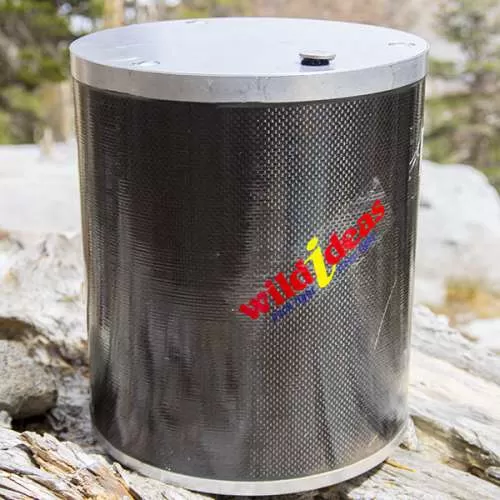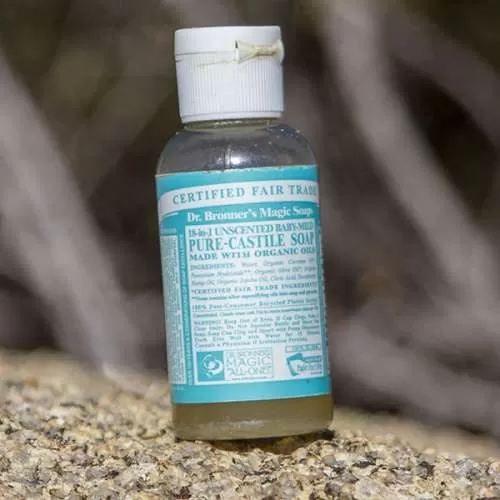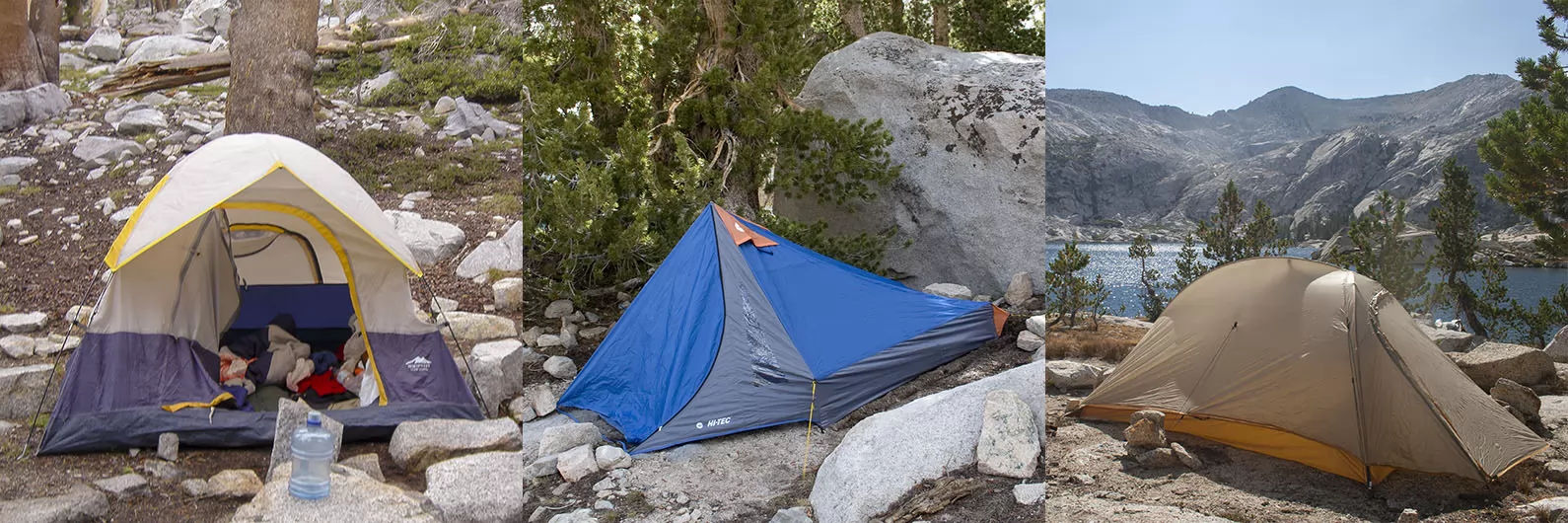
Intro
I don't think I ever spent more time researching any type of equipment than tents. It kind of makes sense, it can be a huge weight factor, and it's the piece that protects you from the elements. The options are so many, it's very hard to choose. First, I knew we needed something more than a tarp. While they work very well for many people, they don't offer the protection we were looking for. Em attracts bugs like a light, if there's one mosquito or one spider around, it will bite her (funny enough, we both love spiders, nonetheless). So from the get-go, I was looking for a full-body tent. Also, after experimenting with the cheapo Big5 tent, and considering that we were planning to do lots of high-altitude trips were we'll have to camp on bare rock, opting for a free-standing tent made sense. These two considerations narrowed the field of candidates considerably, but there were still many models to choose from. The Big Agnes Fly Creek UL2 stood out because of it's weight. At just over 2 pounds, it weighs as much as many 1-person bivy sacks. Some would say it's semi free-standing because of the triangular pole design, but it's still much better than anything pitched with hiking poles.
After hunting for a bargain and finally buying it on eBay, we pitched the tent in a park to try it. We always test everything before actually going on a trip as we don't want to figure it out in a storm or in the dark. The first time we used it on was the San Jacinto trip via Fuller Ridge. The night was somewhat cold, but there was no rain and almost no wind, so we couldn't really tell how well the tent fared. Later, though, it exceeded all expectations.
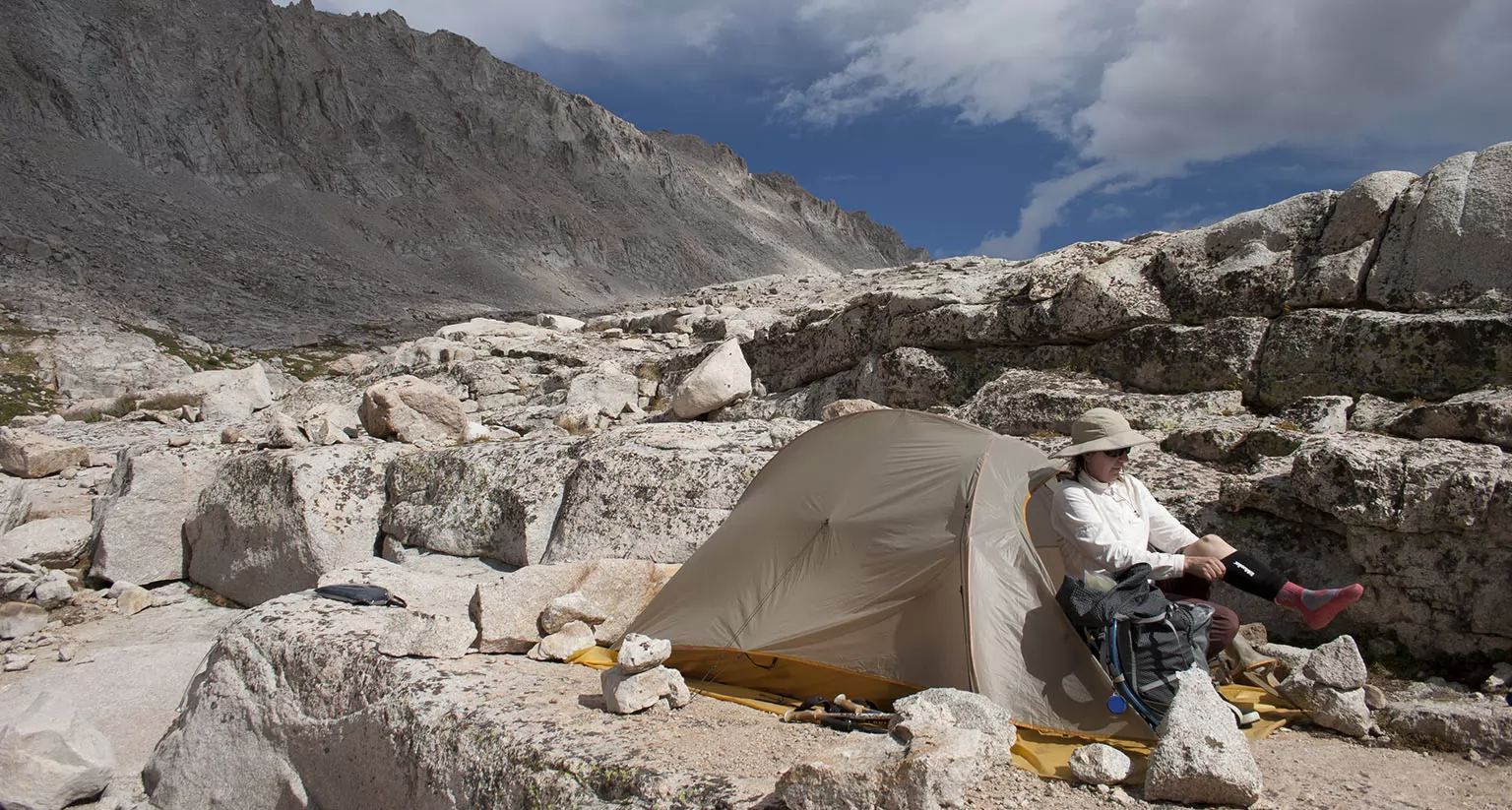
Setup and breakdown
Pitching and breaking down is simple, one person can do it alone easily, however, for speed's sake, we usually help each other. The triangular pole attaches to the to sides in the front and to the middle in the back. Theoretically, 11 stakes would be needed to anchor all possible points. In reality, we almost always use only 8 as it's enough to hold the tent secure even in high winds. On the sides, there's no real need to stake out the two separate cords individually, and in the back, staking out the middle (where the pole attaches) only makes sense in the most extreme circumstances. The aluminum stakes it comes with are very sturdy, lightweight, and very versatile for all sorts of terrain. Of course, we never carry a hammer, so usually I put my hiking gloves back on, take a suitable rock, and use that to drive them in. I only managed to break one, and it was my fault, I was tired and didn't realize I hammered it deep into a root that was a few inches below the dirt. Next morning, no matter how much I hammered-jiggled it sideways, it just wouldn't budge, and then it broke in half.
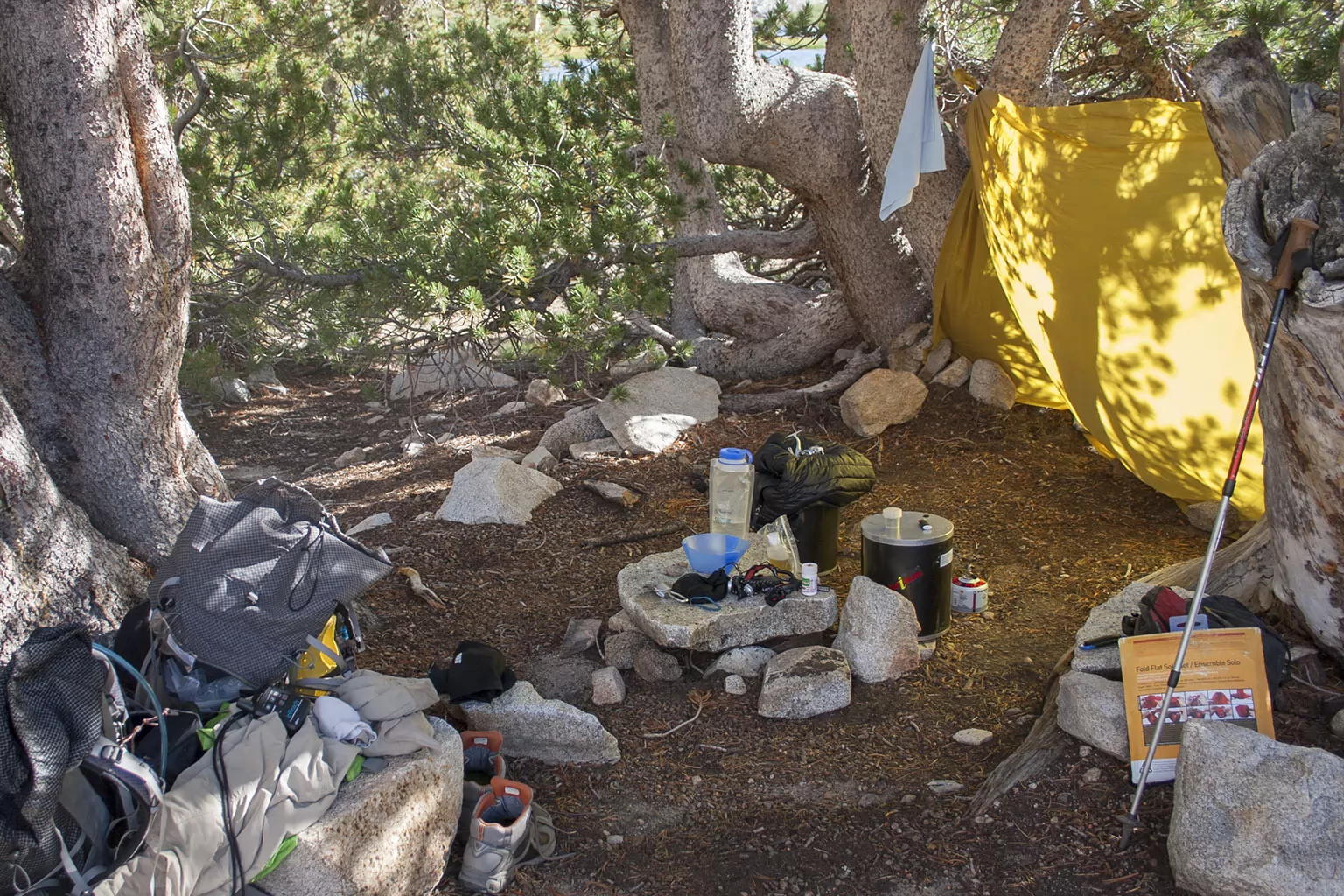
A few times we pitched it on bare rock. Learning how to do this is something I very strongly recommend. Actually, a few hundred pounds of rock are needed to anchor a tent properly, especially if wind is expected. In 2012, at a tarn above Guitar Lake (Mt. Whitney Zone), we did just that as a huge windstorm was developing. Luckily, boulders of all shapes and sizes were available, so we had a comparatively easy job. Not much later, gusts must have gotten to 40+ miles. No problem for the Fly Creek.
Footprint
We didn't buy the footprint, mainly because it's too heavy. However, I got a silnylon tarp from eBay. You can buy them at 65" width by the foot length, and they're great. The 65" gives us 3-4 inches on both sides, where we can store stuff like hiking poles at the side of the tent, and we got a piece that's long enough to cover the tent's length, plus the area below the vestibule. This makes an "anteroom" where to leave boots and do all sorts of things without getting dirt into the tent. Obviously, if there's a chance of rain, we make sure the tarp is tucked under the body of the tent all around.
Also, after we break down the tent, I like to keep the tarp where it was, as it gives us a nice big and clean area to pack our bags. Another consideration for the tarp is that it's pretty big and waterproof, so we can use it as an extra rain and/or wind shelter if needed. Many people use the much cheaper Tyvek, but I decided on silnylon as I got a great deal and it has more uses and it's way more durable.
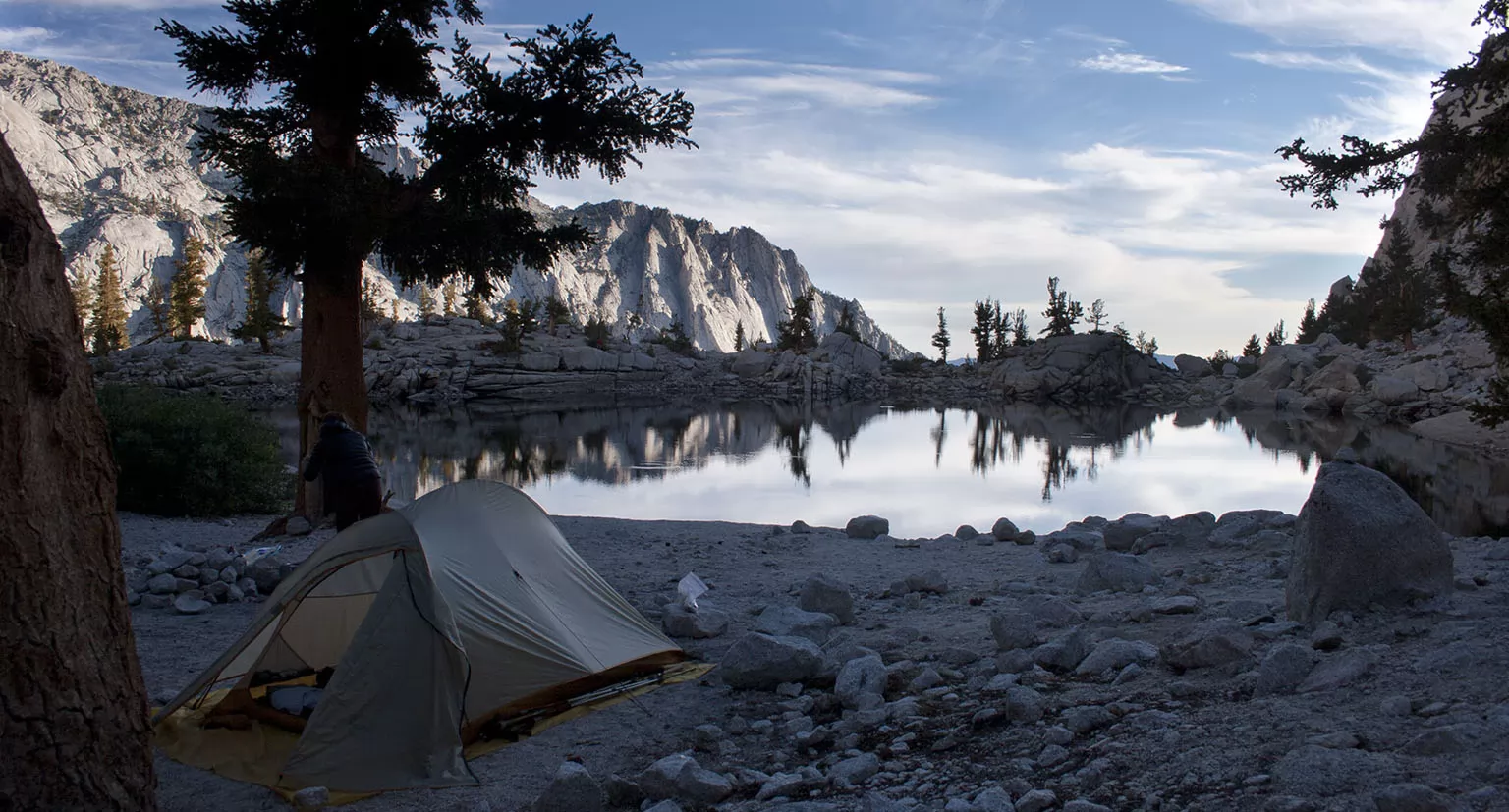
Performance
In the years since we purchased it, the tent has been with us for I'd guess 1,000+ trail miles, 100+ nights, enduring all sorts of exposure, and it's still holding up well.
We endured several hailstorms in it, one time pea-sized ice was hammering it for 45 minutes straight. We weathered extremely heavy downpours lasting for hours, and one time, we left it standing for an entire day in medium-heavy rain on Catalina Island. In all this, the tent never leaked even one drop of water. It withstands very strong winds, huge amounts of rain, and most importantly, the combination of the two for a really long time. Of course, it has to be set up correctly and proper trenching around it is vital, just don't forget to fill it in when you're leaving.
We got snowed on many times, with over a foot accumulating around us, and we had to keep pushing it off the vestibule and the sides, but it held up without problems. We left the tent in very heavy snowfall for a few hours, and by the time we got back, it was almost completely covered - all we had to do was clean it off a bit and we were OK.
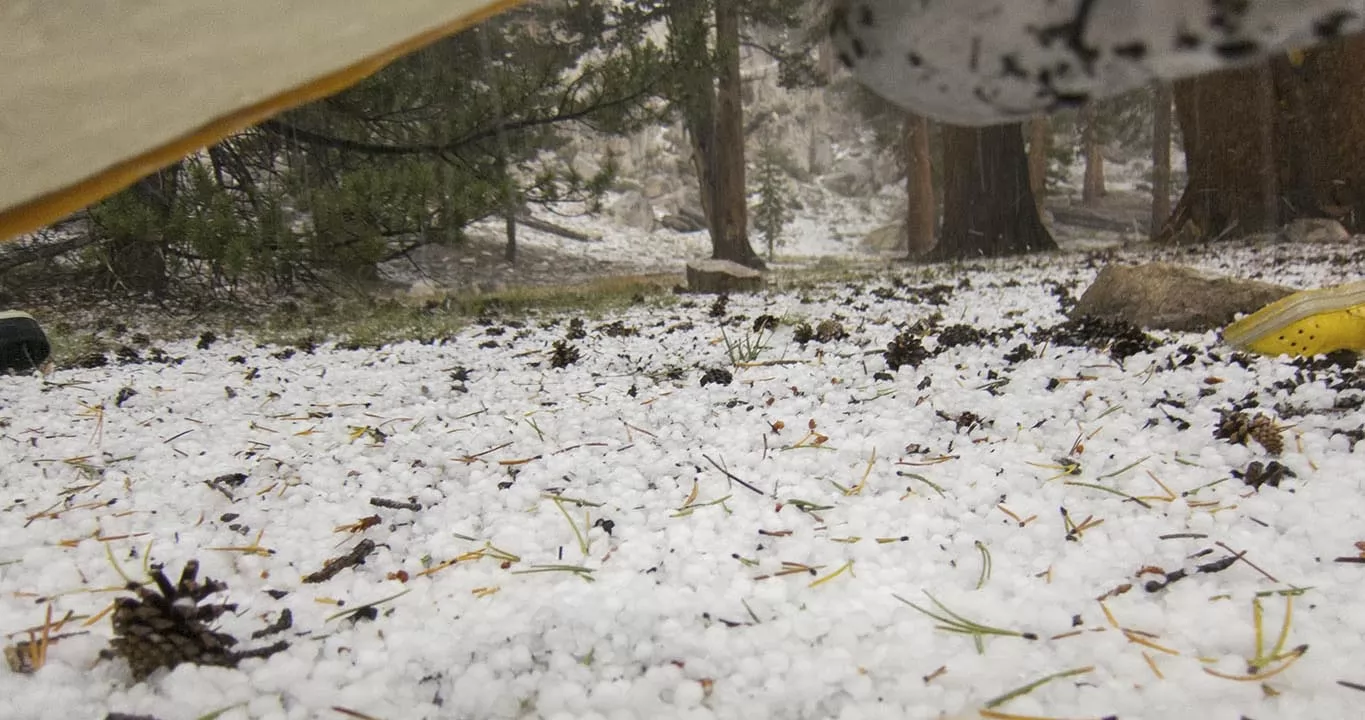
Living in it
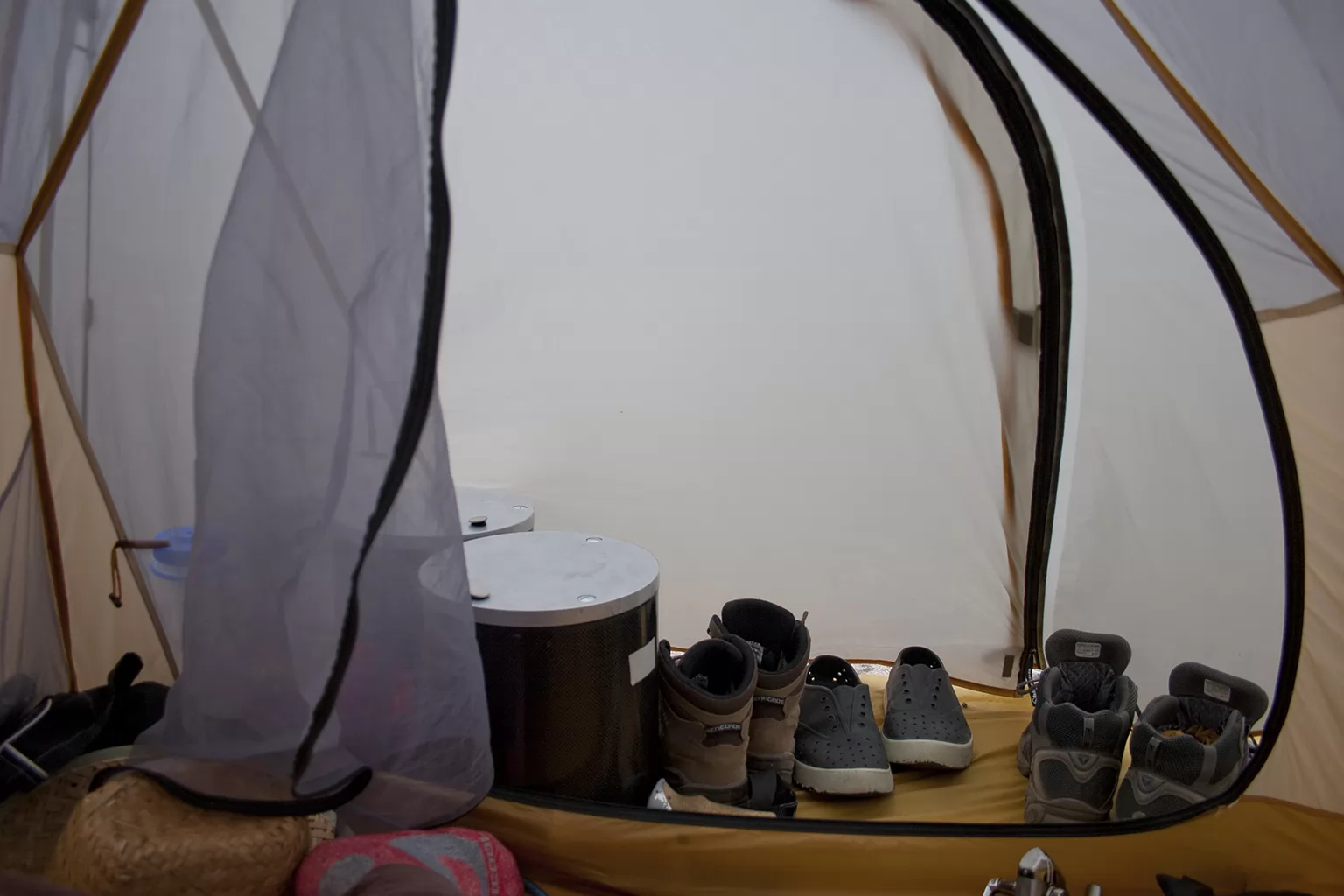
Let's be honest here, this is a small tent. Compared to bivy sacks of the same weight, it's a palace, but a tiny palace. It's not intended for long stays, and if the weather forces you to spend a whole day inside, then of course it uncomfortable. All this aside, it's very livable as a backpacking tent. Set it up, get inside at bedtime, get out early in the morning, pack it up, start walking, repeat.
The footprint is narrow and not very long, it actually happened quite a few times that the only perfectly level area was just big enough for this tent, anything bigger would not have fit.
The vestibule area is relatively roomy, and though we never ever left our backpacks out there during the night, we left them a few times during the day, and they fit fine. At night, we keep our shoes, the stove and extra water there. Our backpacks are completely emptied and laid out at our feet, as we have short mattresses. To use the word "roomy" for the inside, too, would be a bit of a stretch, but it's comfortable for two non-giant people who cuddle up in the same sleeping bag. I can imagine spending the night in separate sleeping bags with somebody who's not my spouse, but never tried it. A friend of mine said him and his buddy went for a weeklong trip with this tent and they were OK, but I don't have first-hand experience there.
It can get squeaky in even light winds, even squeakier than most tents I've slept in, mainly as the silnylon rainfly stretched over the pole is being moved around. If you're a light sleeper and bothered by this, take ear plugs (just not like the Admiral in Hot Shots). I never use them, I could not imagine sleeping in a tent and not being able to hear what goes on around me, including rain and animals. Em has it much better, she's a great sleeper and usually it doesn't bother her at all.
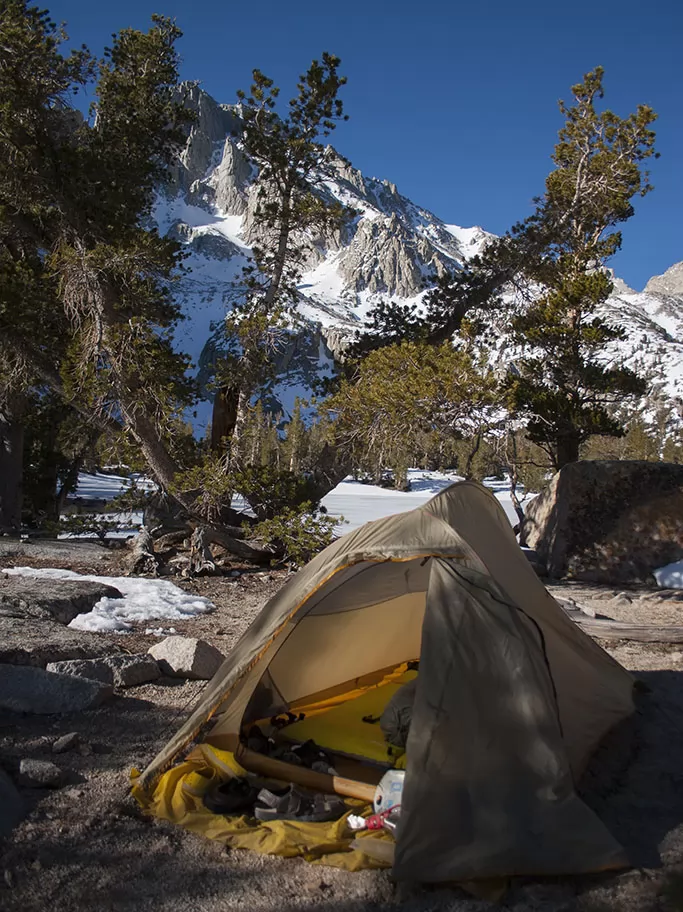
Getting in and out is a somewhat of a challenge, especially with tired joints and muscles, but it can be learned. We both have our own routines of how to enter and exit with the least amount of trouble.
Like most tents, if conditions are right for condensation than that's what will happen. However, ventilation is great and it's far less of a problem than with single-walled tents. If it's very windy and dusty, however, then there's no way you can keep the dirt out, as we learned the hard way on Santa Rosa Island. For those conditions, the Slater UL is much better suited, as it's essentially the same as the Fly Creek, but with breathable nylon instead of the mesh. The same applies for the combination of very strong wind and snow, which we never experienced together, but I can image it being very much the same.
Customer Service
Big Agnes' customer service and repair shop is beyond excellent. In summer 2014, the main zipper started acting up, and a few small holes appeared on the vestibule portion of the rainfly. A weeklong trek was coming up, and we wanted to make sure it's in good shape, so I called Big Agnes and set up a repair return. The guys on the phone were very nice and knowledgeable and assured me we'll be taken care of quickly. They instructed me to mark all the spots in need of repair with masking tape (not duct tape), ship it back to them and then they'll give us a quote regarding the cost. However, it ended up being free, including shipping back to us, and we got it back in less than 10 days. Love them.
Outro
Simply put, this is an extraordinary tent. It's light, durable, and holds up very well in the most difficult conditions. I just love it when there's a huge storm and we're inside, safe and dry and cozy. It never failed us, and if I'd have to buy a new tent now, I'd buy the same. Customer service is excellent, extending the tent's life considerably.






